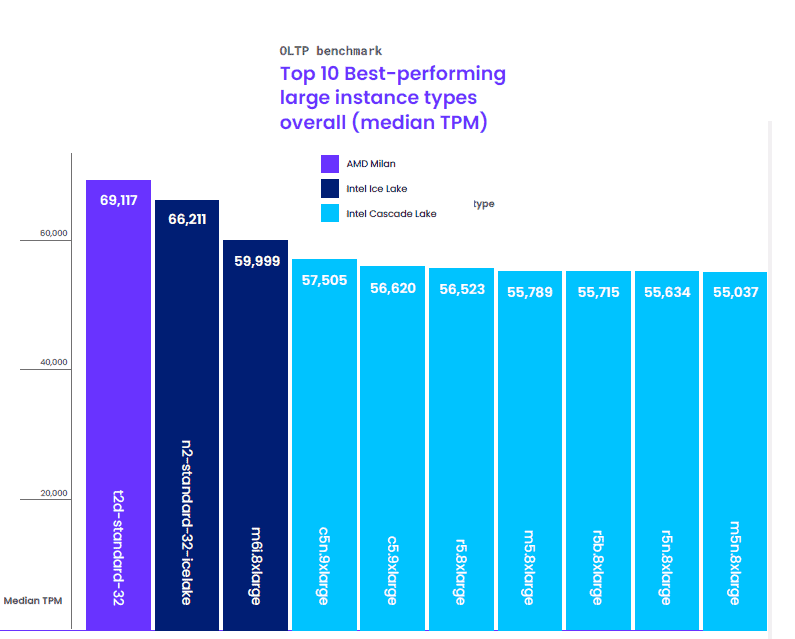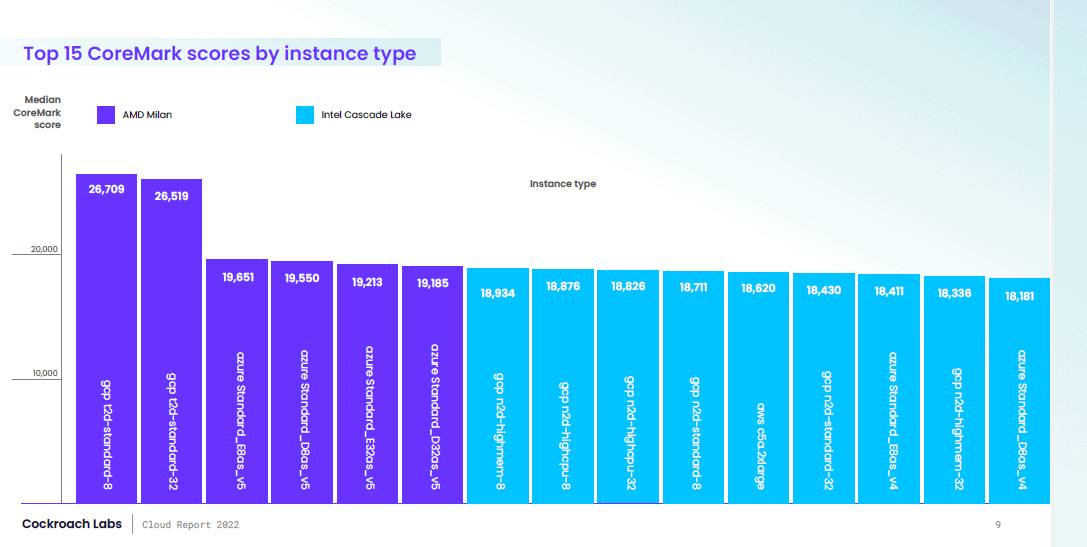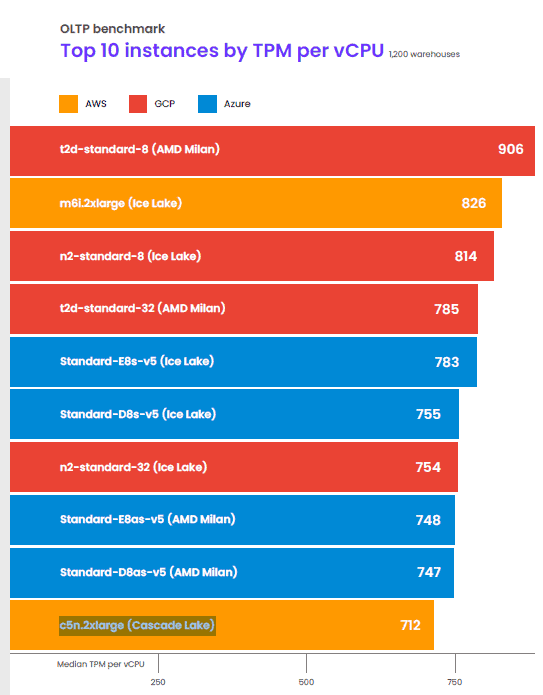Researchers from Cockroach Labs conclude that the most powerful cloud instances run on AMD Milan. The processors outperform Intel Ice Lake and Cascade Lake.
Cockroach Labs investigated the cloud instance offering of Google Cloud, Microsoft Azure and AWS. The report sheds light on providers’ price-quality ratio and the performance of instances.
Prices: little difference
The research shows that AWS, GCP and Azure offer similar price-performance ratios. Some benchmarks and configurations score slightly higher than others, but the difference is never greater than 1.5 percent. That’s the study’s margin of error. According to Cockroach Labs, an investment returns roughly the same storage, capacity and performance, regardless of the provider chosen.
Performance: AMD Beats Intel
In addition to price-performance ratios, Cockroach Labs examined the power of instances. Before we expand on that, it’s important to clarify the instances on offer. Most cloud providers offer small, medium and large instances. A standard n2 instance from Google Cloud has more processors and memory than a small instance, but the component’s models are the same.
The performance of small and large instances can differ. If a large instance has twice as many processors as a small one, there’s no guarantee that the instance calculates twice as fast. That’s why Cockroach Labs researched three separate categories: small instances, large instances and all instances.
Google Cloud wins in the large segment. The t2d-standard-8 instance processed an average of 22,018 transactions per minute (TPM). AWS m6i.2xlarge, the second-fastest instance, processed just over 20,000 TPM. Google Cloud’s n2-standard-8-icelake follows in third place. The top 10 largely runs on Intel Ice Lake and Intel Cascade Lake CPUs. By contrast, Google Cloud’s winning t2d-standard-8 runs on AMD Milan.

In the general category, AMD outperformed Intel as well. Five of the 15 most powerful instances run on AMD Milan. Two variants of Google’s gcp.t2d-standard are ranked in positions one and two. Positions three and four go out to Azure Standard_E8as_v5 and azure Standard_D8as_v5. The Azure Standard_E32as_v5. ended in fifth place.

Smaller instances are better for OLTP
As mentioned before, the price-performance ratio of all major providers is comparable. This does not mean that the price-performance ratio of every instance is the same. For some applications, small instances are more cost-effective.
Cockroach Labs recommends running online transaction processing (OLTP) applications on smaller instances. Google Cloud’s t2d-standard-8 (AMD Milan) instance processed more OLTP transactions per processor than any other instance. Eight of the ten most efficient instances for OLTP transactions are small instances, including Azure standard-E8s-v5 (Ice Lake) and GCP n2-standard-32 (Ice Lake). Large instances from Amazon are an exception to the rule. The m6i.2xlarge (Ice Lake) and c5n.2xlarge (Cascade Lake) reached the top ten.

